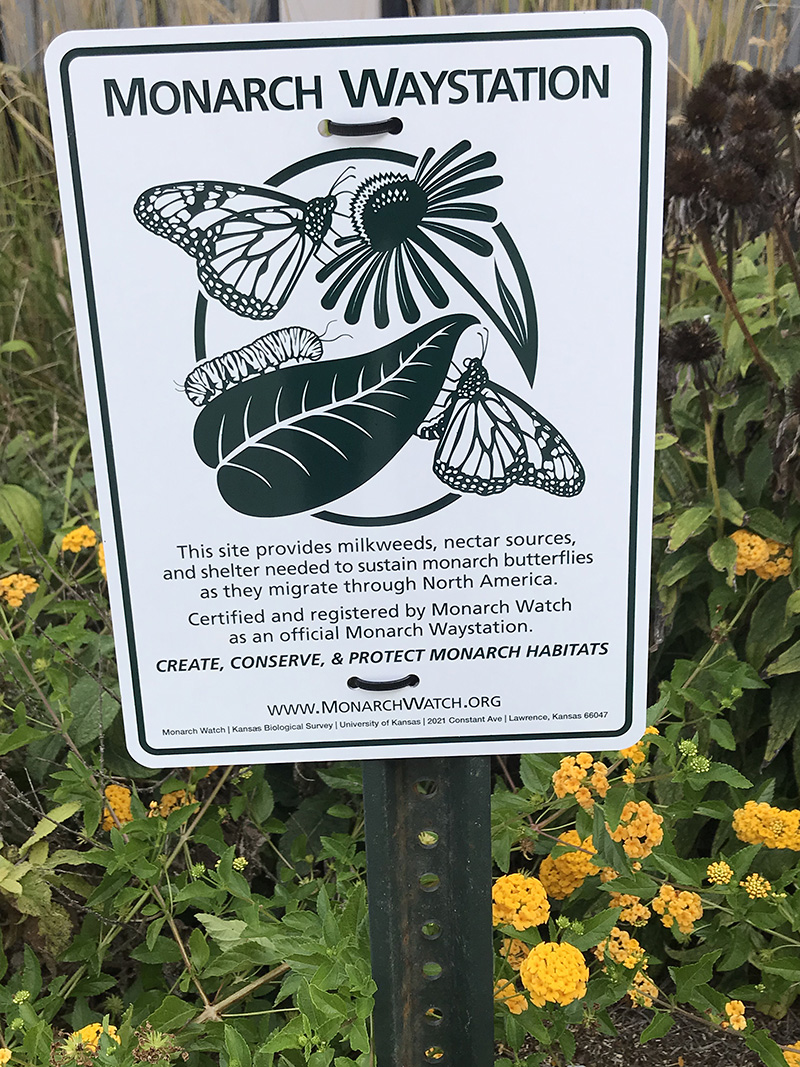
ACTC a certified Monarch Waystation
Sept. 16, 2019
 Each fall, hundreds of millions of monarch butterflies migrate from the United
States and Canada to mountains in central Mexico where they wait out the winter until
conditions favor a return flight in the spring. The monarch migration is truly one
of the world's greatest natural wonders, yet it is threatened by habitat loss at overwintering
grounds in Mexico and throughout breeding areas in the United States and Canada, according
to MonarchWatch.org.
Each fall, hundreds of millions of monarch butterflies migrate from the United
States and Canada to mountains in central Mexico where they wait out the winter until
conditions favor a return flight in the spring. The monarch migration is truly one
of the world's greatest natural wonders, yet it is threatened by habitat loss at overwintering
grounds in Mexico and throughout breeding areas in the United States and Canada, according
to MonarchWatch.org.
That’s why Ashland Community and Technical College is doing its part to become
more environmentally friendly and has recently been recognized as a certified Monarch
Waystation.
“We are transforming the landscapes here at ACTC to be environmentally friendly,
sustainable and low maintenance,” said Paul Seasor, director of maintenance and operations.
“We have a long-range plan for the lawn and landscape, which has allowed us to become
a Tree Campus USA for four consecutive years, and now we have been recognized as a
Monarch Waystation.”
Each Monarch Waystation gives the monarch butterfly an area where they can receive
resources necessary for their yearly migration from their breeding grounds in North
America to their overwintering grounds in Mexico, Seasor said.
Many other species of butterflies and bees have also taken advantage of the habitat.
Some of the plants that have been added around campus are butterfly milkweed and common
milkweed, which are host plants for monarch butterflies. ACTC also has black-eyed
Susan, cosmos, lantana, verbena, zinnia and purple coneflower, which are nectar plants
for monarch butterflies.
"The things we are doing with our landscape areas show that we do more than just
talk about being environmentally friendly, we are putting those words to work,” Seasor
said. “All this is important, especially the Monarch Waystation, because a large amount
of habitat for insects, especially monarchs, is being destroyed in the U.S. at a rate
of 6,000 acres a day.”
According to Monarch Watch, anyone can help to create monarch habitats in home
gardens, at schools, businesses, parks, zoos, nature centers, along roadside, and
on other unused plots of land. Creating a Monarch Waystation can be as simple
as adding milkweeds and nectar sources to existing gardens or maintaining natural
habitats with milkweeds. No effort is too small to have a positive impact.
To find out more about Monarch Waystations, visit https://www.monarchwatch.org/waystations.
